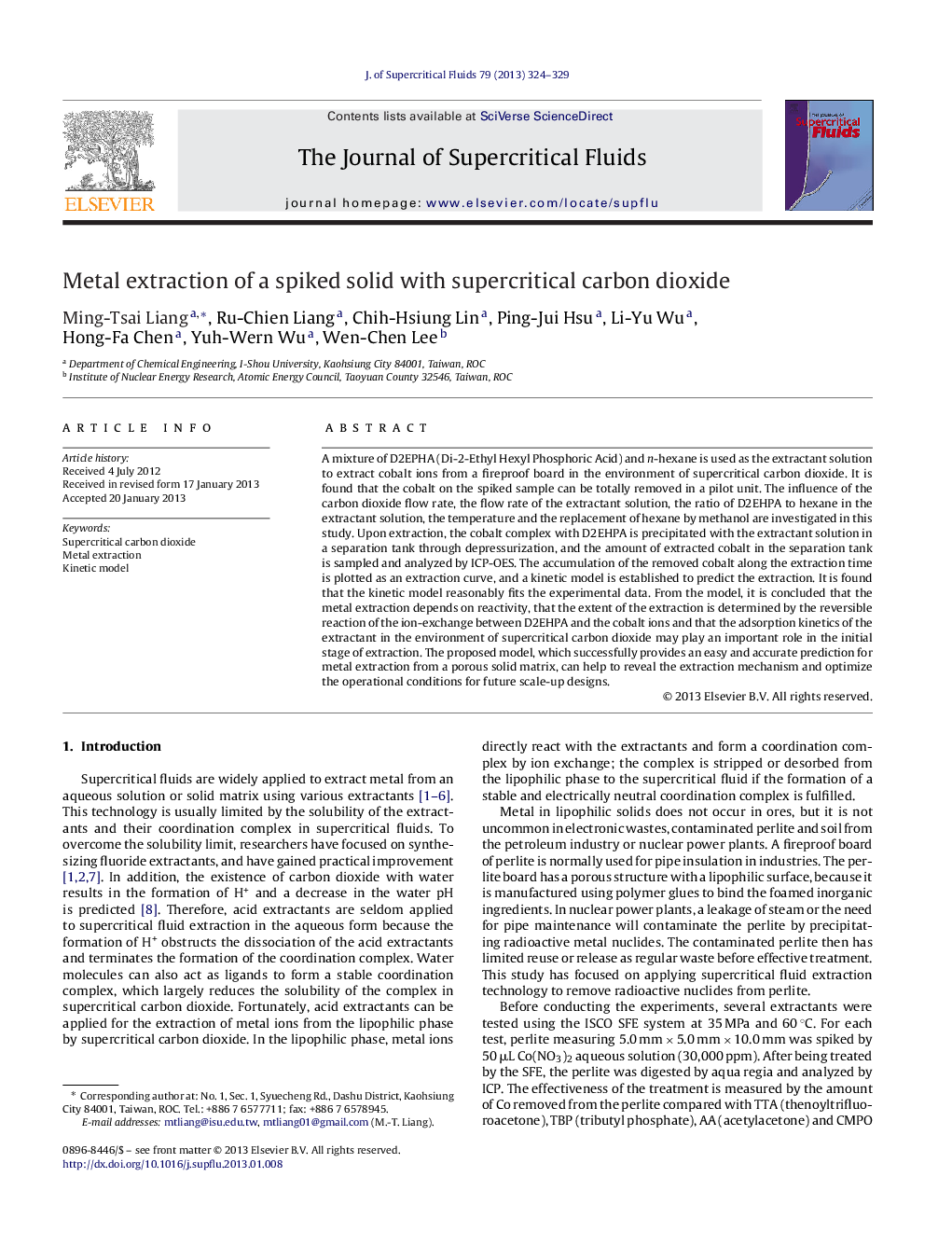| Article ID | Journal | Published Year | Pages | File Type |
|---|---|---|---|---|
| 230747 | The Journal of Supercritical Fluids | 2013 | 6 Pages |
A mixture of D2EPHA (Di-2-Ethyl Hexyl Phosphoric Acid) and n-hexane is used as the extractant solution to extract cobalt ions from a fireproof board in the environment of supercritical carbon dioxide. It is found that the cobalt on the spiked sample can be totally removed in a pilot unit. The influence of the carbon dioxide flow rate, the flow rate of the extractant solution, the ratio of D2EHPA to hexane in the extractant solution, the temperature and the replacement of hexane by methanol are investigated in this study. Upon extraction, the cobalt complex with D2EHPA is precipitated with the extractant solution in a separation tank through depressurization, and the amount of extracted cobalt in the separation tank is sampled and analyzed by ICP-OES. The accumulation of the removed cobalt along the extraction time is plotted as an extraction curve, and a kinetic model is established to predict the extraction. It is found that the kinetic model reasonably fits the experimental data. From the model, it is concluded that the metal extraction depends on reactivity, that the extent of the extraction is determined by the reversible reaction of the ion-exchange between D2EHPA and the cobalt ions and that the adsorption kinetics of the extractant in the environment of supercritical carbon dioxide may play an important role in the initial stage of extraction. The proposed model, which successfully provides an easy and accurate prediction for metal extraction from a porous solid matrix, can help to reveal the extraction mechanism and optimize the operational conditions for future scale-up designs.
Graphical abstractFigure optionsDownload full-size imageDownload as PowerPoint slideHighlights► Successfully removed cobalt metal from a solid matrix by supercritical carbon dioxide. ► A kinetic model was proposed which reasonably fits the experimental data. ► The model provides a good prediction for metal extraction from a solid matrix. ► It is concluded that the metal extraction belongs to reactive extraction. ► The extraction is determined by the ion-exchange between the extractant and the metal.
